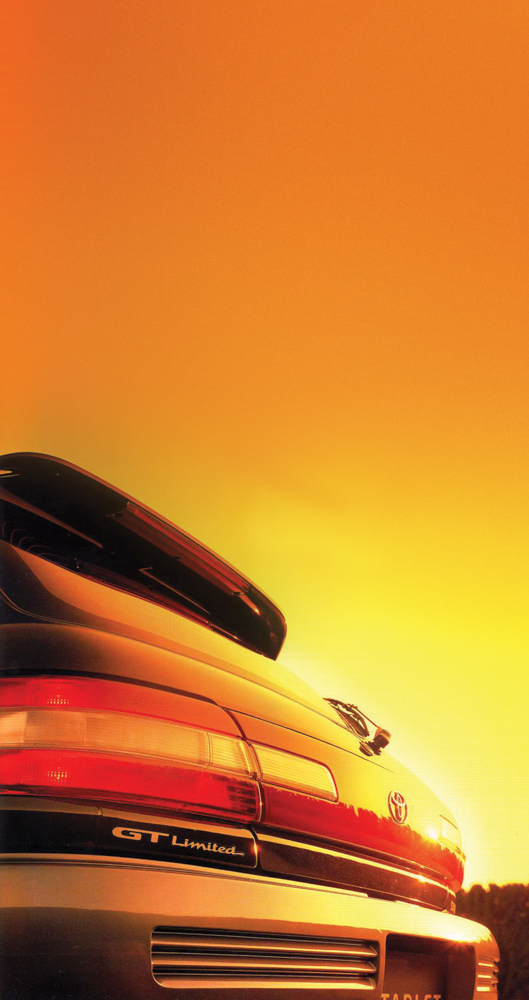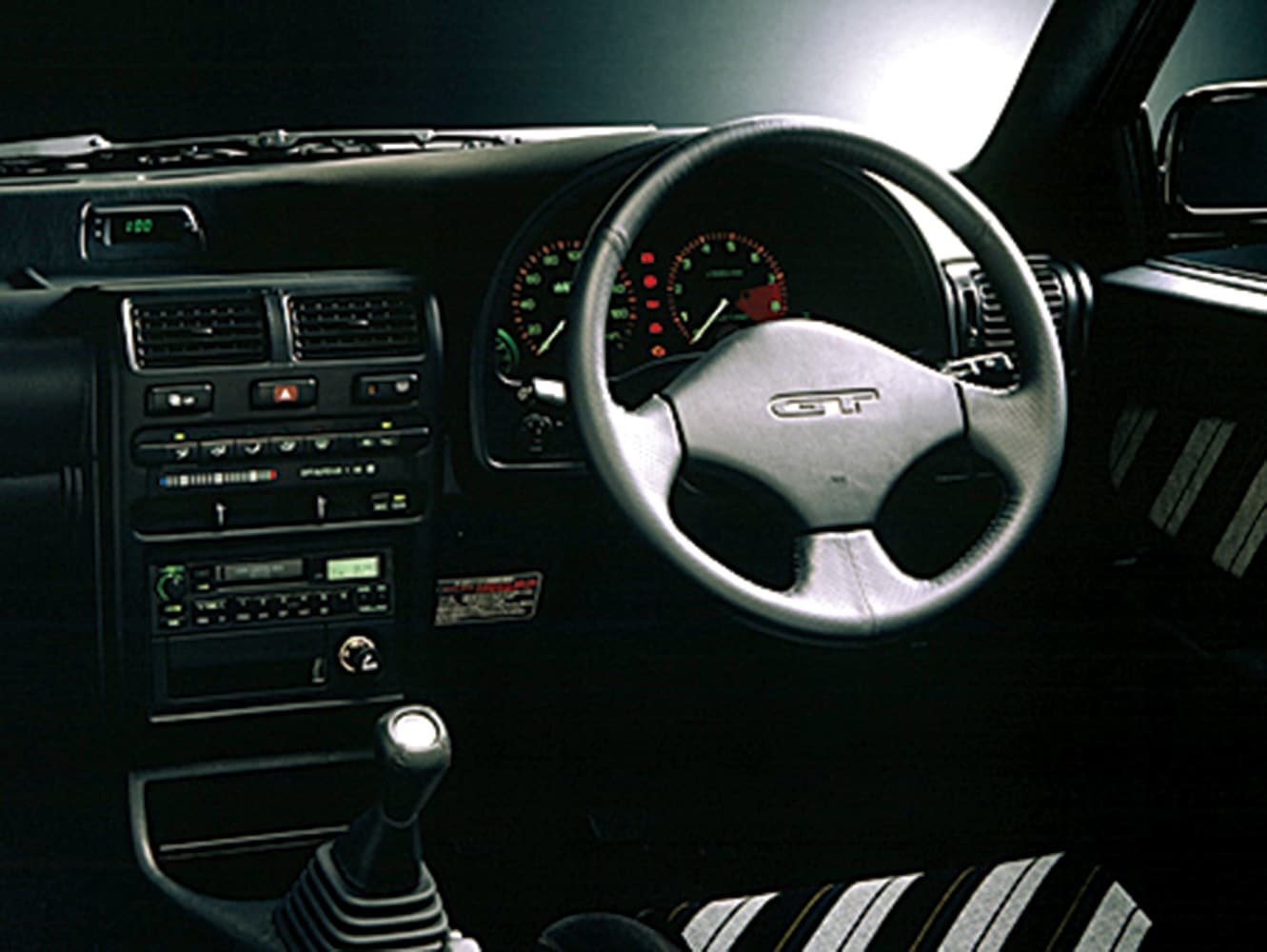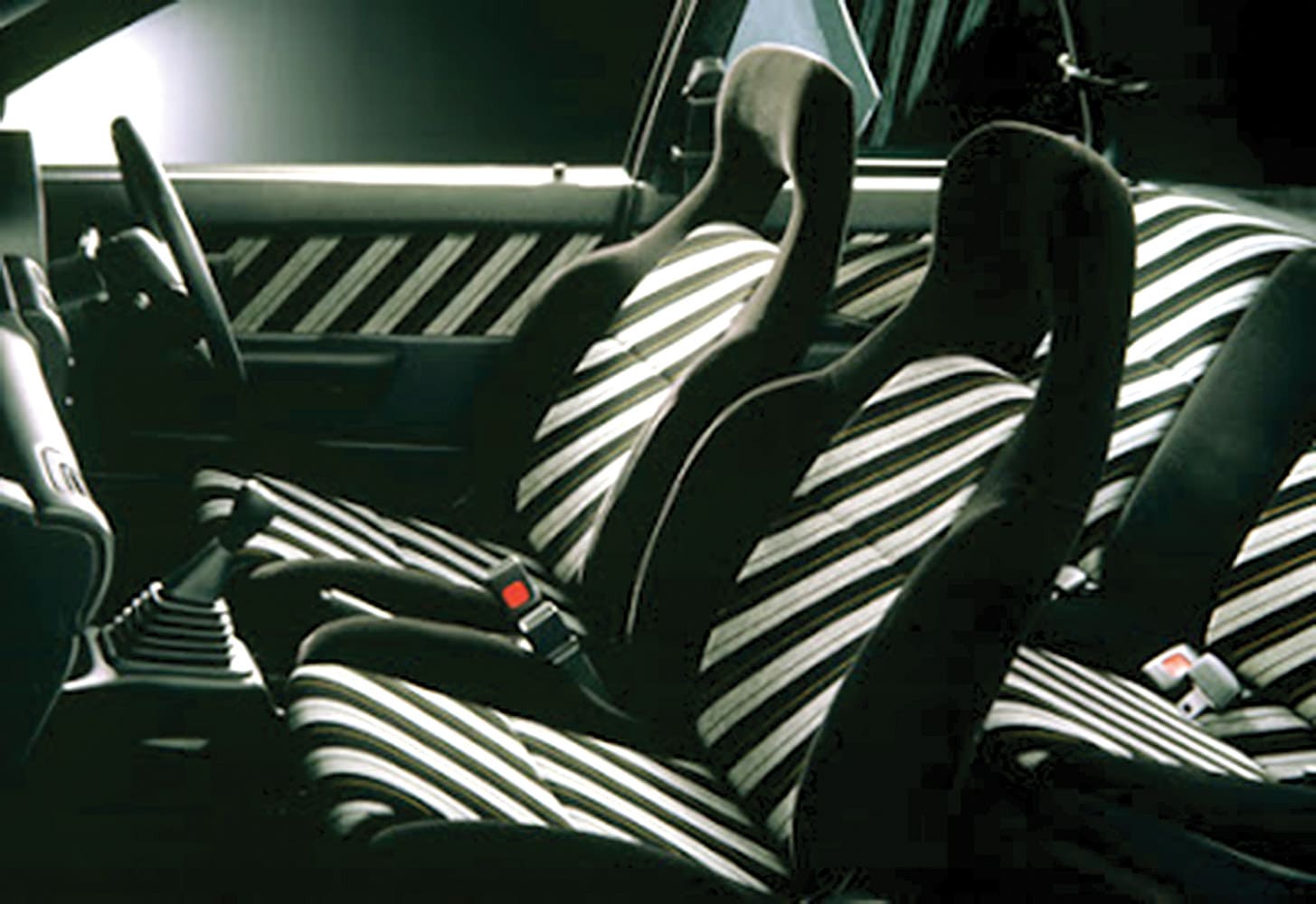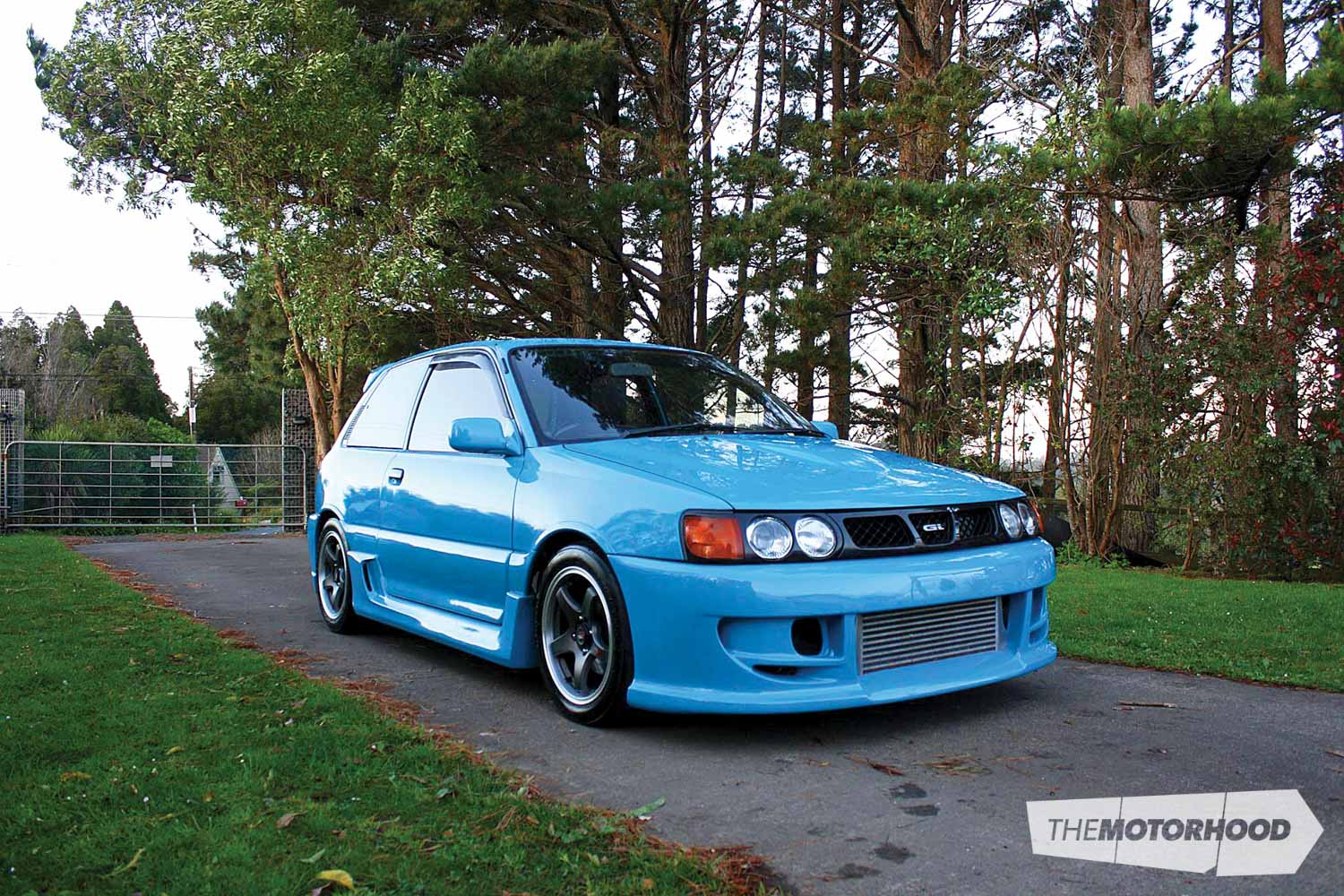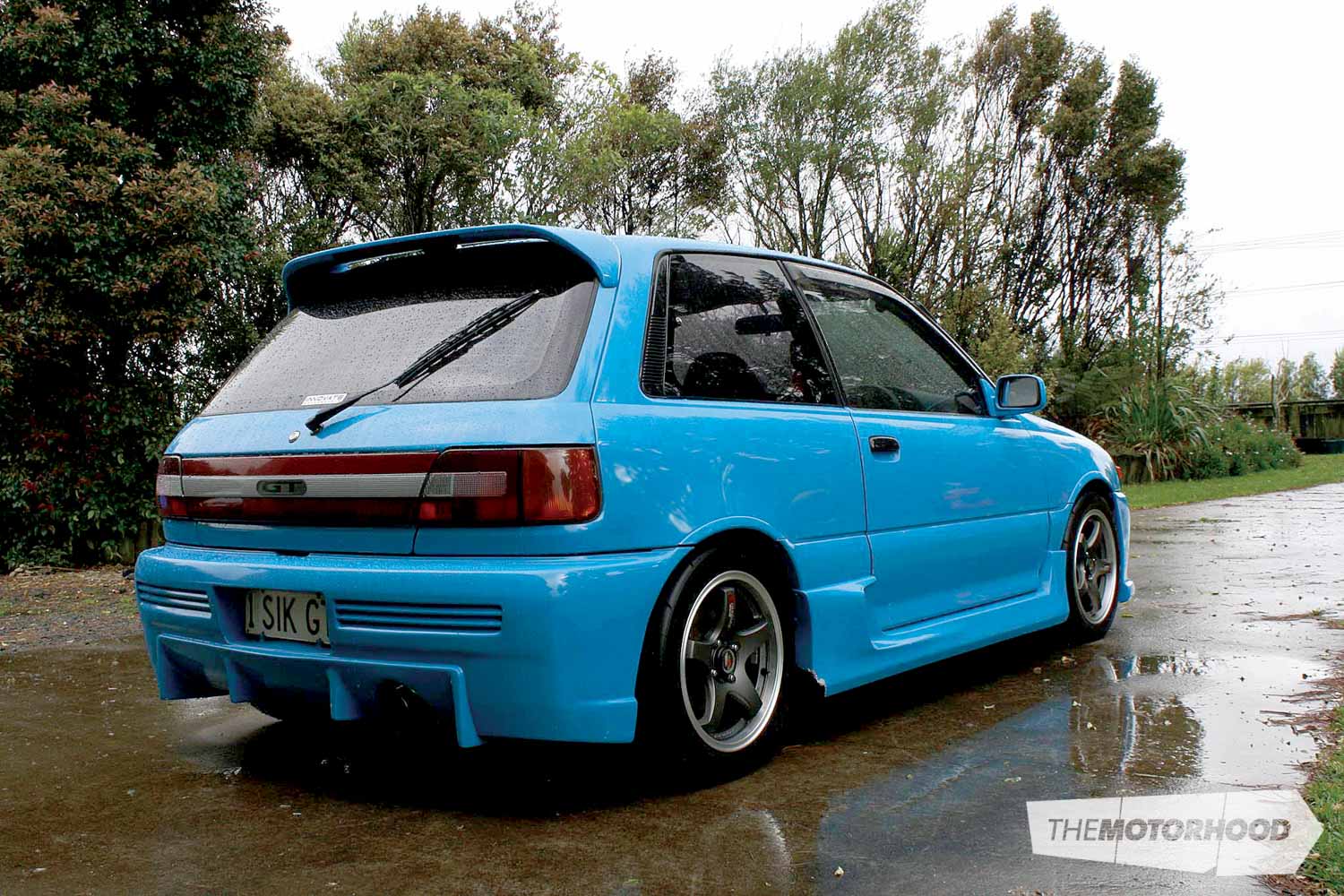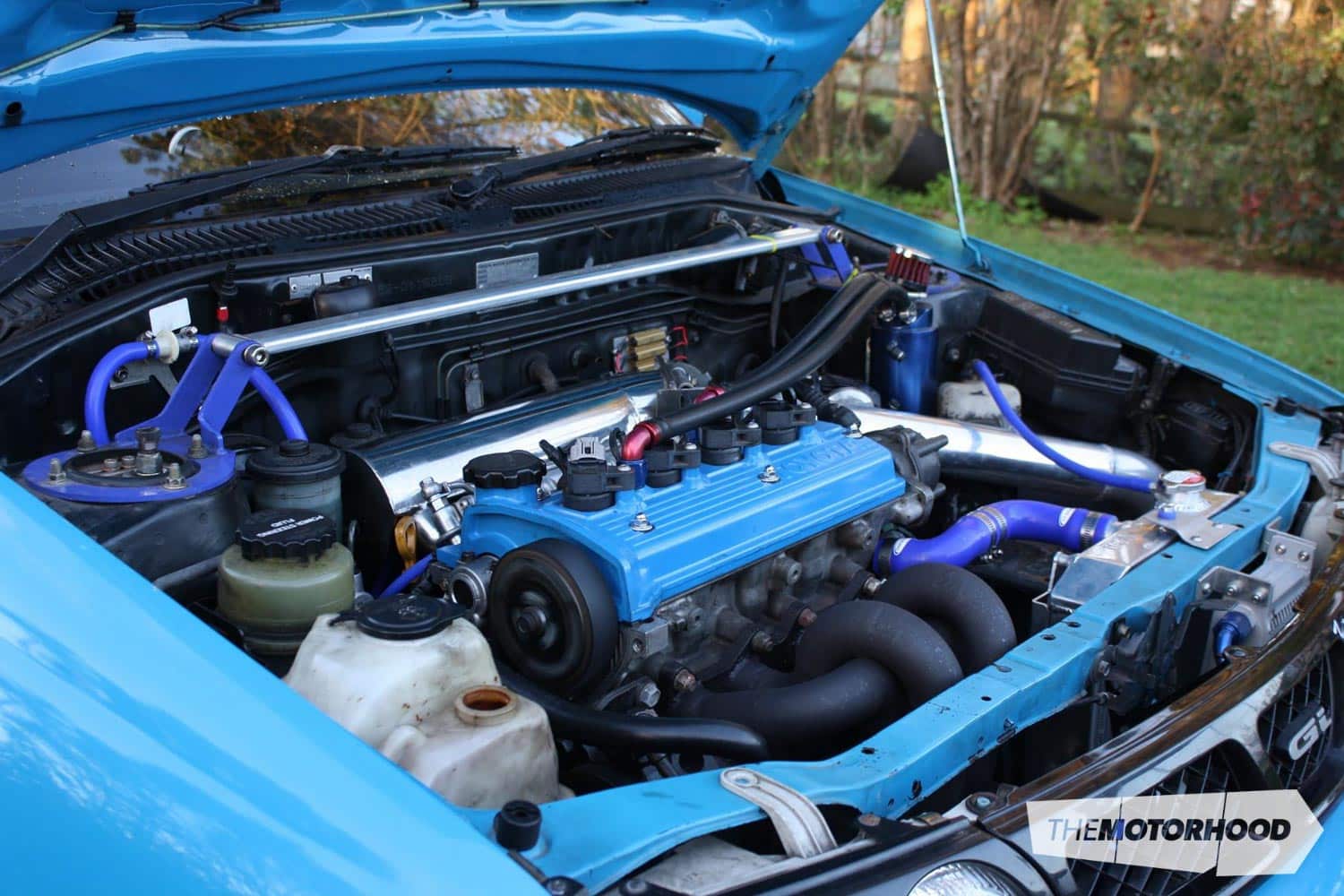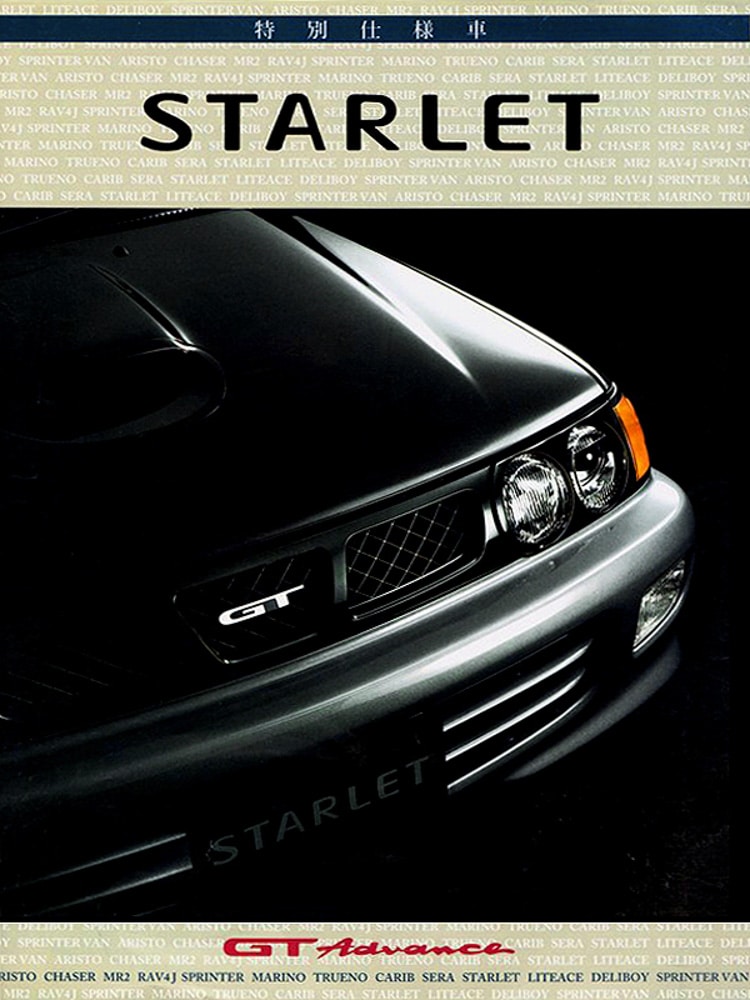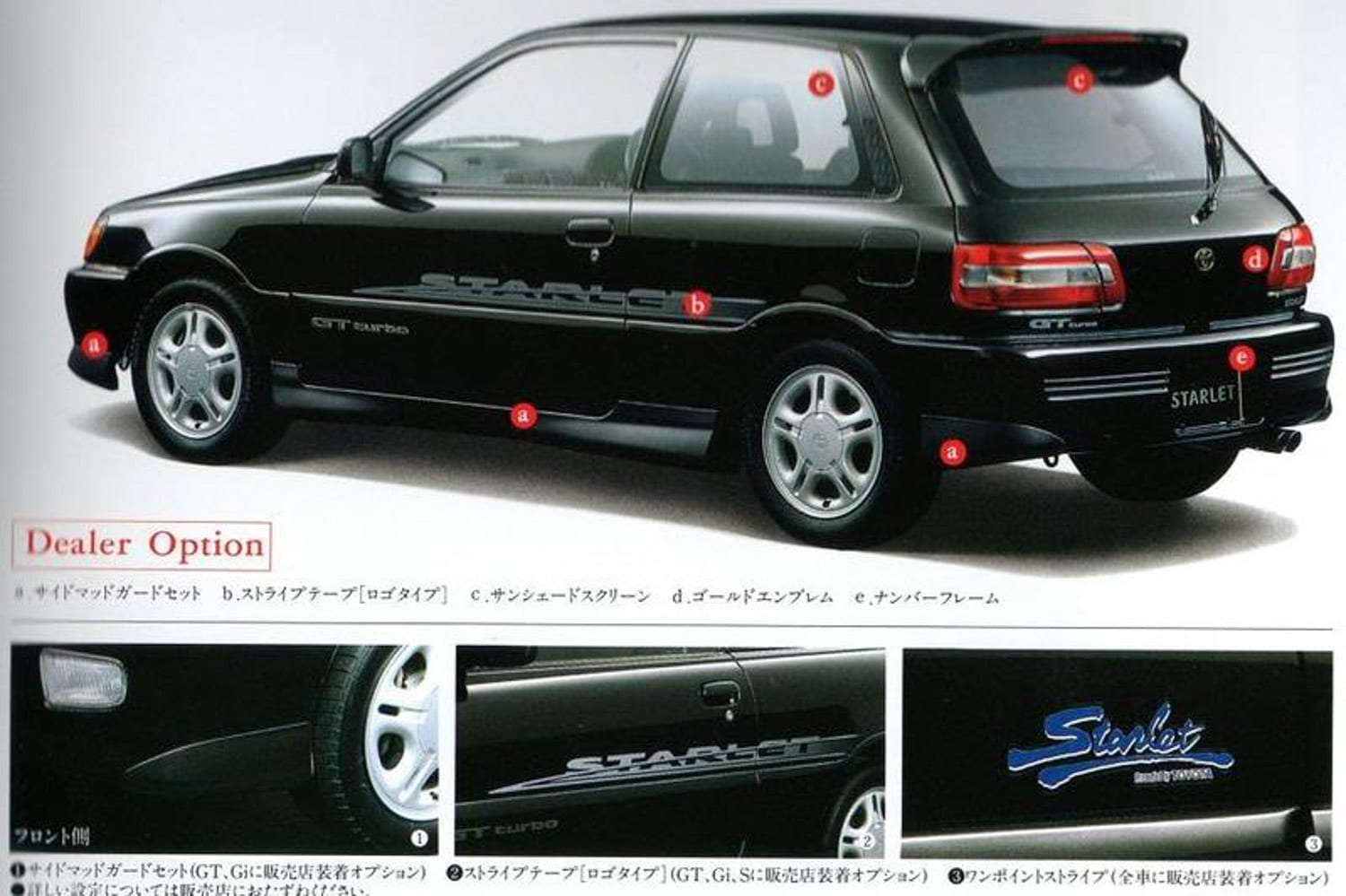NZ Performance Car have covered some extremely popular chassis in previous instalments of Scrapyard Gains, but it seems — judging by the endless emails — we’ve missed out one of Toyota’s most affordable performance vehicles, the Toyota Starlet GT. It’s a very lightweight hatchback, tipping the scales at 890kg, and although it only produced 99kW (133hp) at the flywheel from its 1300cc four-cylinder 4E-FTE engine, it can reach 100kph from a standstill in 6.9 seconds. The best part is, it will only cost you around $3000 for one of these easily modified hot hatches.
Engine
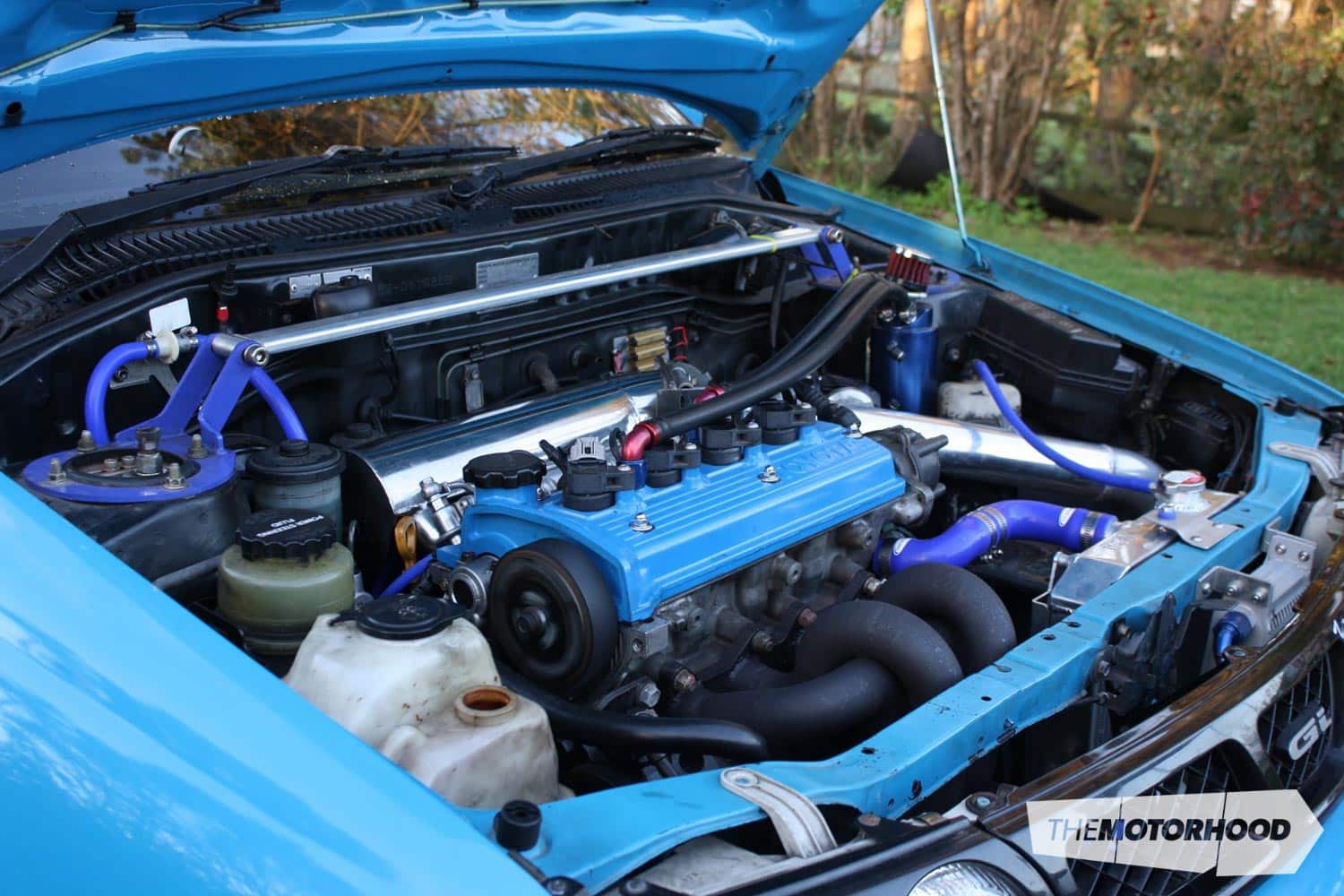
Small-capacity turbo engines are always a blast. From factory, the 4E-FTE engine found in the Starlet GT is a revvy little number, with full boost coming in strong around 2500–3000rpm. Unfortunately, due to an inferior exhaust manifold design and a miniature CT9 turbo, the 4E-FTE engine runs out of puff higher up in the rev range — a good sign the turbo won’t flow much more than factory.
Because the Starlet doesn’t run an airflow meter, it does make things a bit easier to get more power, so first think of your power goals, as simply adding an upgraded air filter and exhaust won’t net you anything worth writing home about. Several turbo combinations are known to work well on the little 4E-FTE, but before you make that decision, decide whether or not you want to stick with the 1300cc engine.
A very common and easy upgrade to increase engine capacity is the slightly larger 5E-series engine commonly found in Tercels, Corsas, Cynos, Paseos, and Corollas. The 5E-FE, or 5E-FHE block will bring capacity up to 1500cc, which will give a good increase in both boost response and off-boost torque. We recommend you head to a local forum such as starletcentral.co.nz for the full list of the parts required for the conversion (we’d need several more paragraphs), but they tell us it’s fairly straightforward.
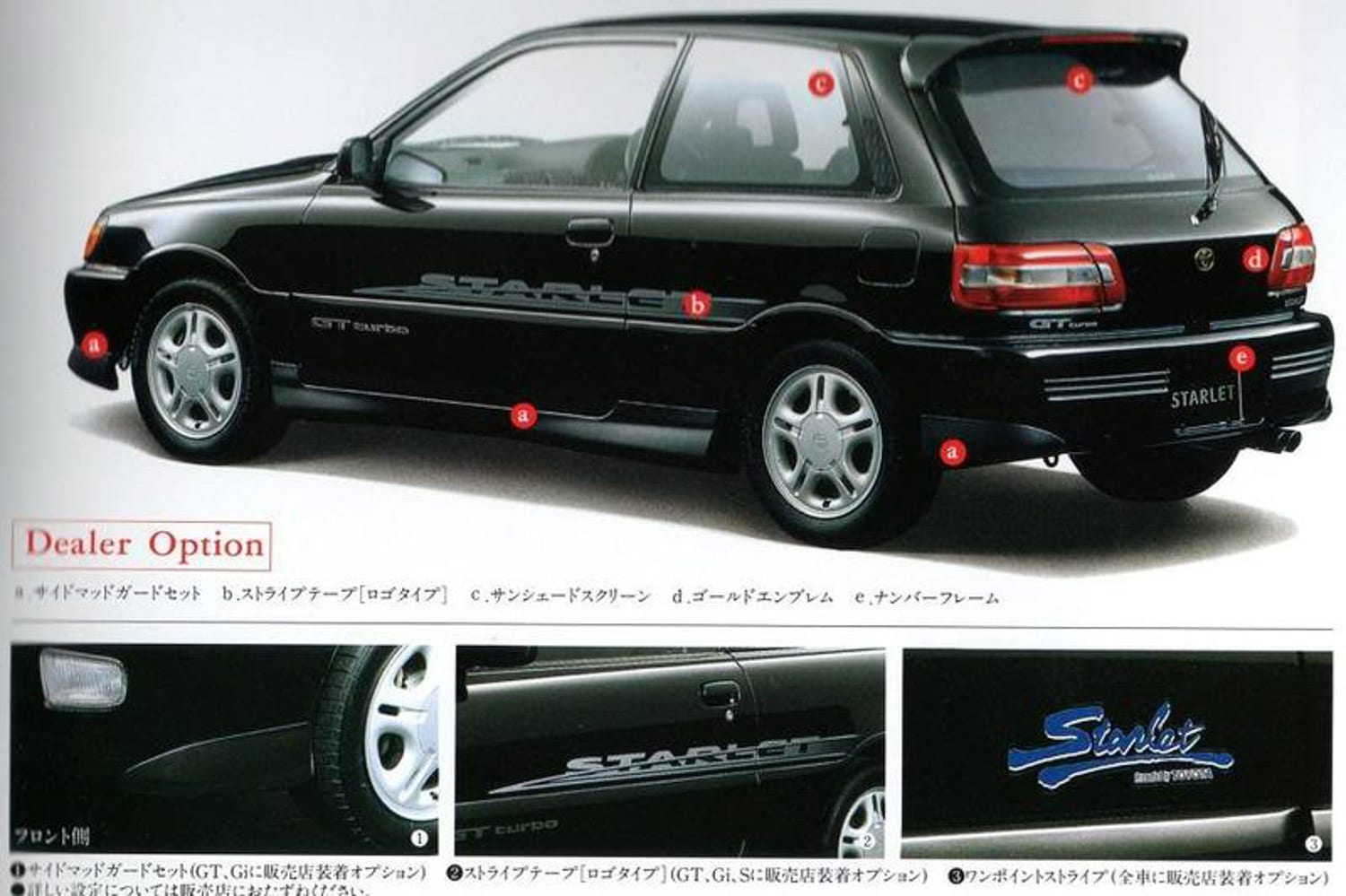
If you’ve decided to stay with the factory 4E-FTE engine, there are a few tried and tested turbo options. Any TD04 turbo off a Subaru WRX gives great gains throughout the rev range and is very affordable, but like any upgraded turbo on this engine, it will require a custom exhaust manifold. The same goes with turbos from the Garrett range. A T25G — which is scrap to most drifters — is ideal if you’re chasing numbers with a 4E or 5E engine, as it will flow more boost, within the limits the factory boost cut and internals will handle. The factory ECU will manage an increase in boost, however, they’re known to lean out high in the rev range if the turbo you’re using is too large — we advise a rising-rate fuel-pressure regulator at the very least, and a stand-alone ECU, for best results. For the ultimate E-series hybrid, combine the 5E-FHE rods with the factory 4E-FTE pistons in any 5E block — this will see you support over 200kW without any problems.
Exterior/Interior aesthetics
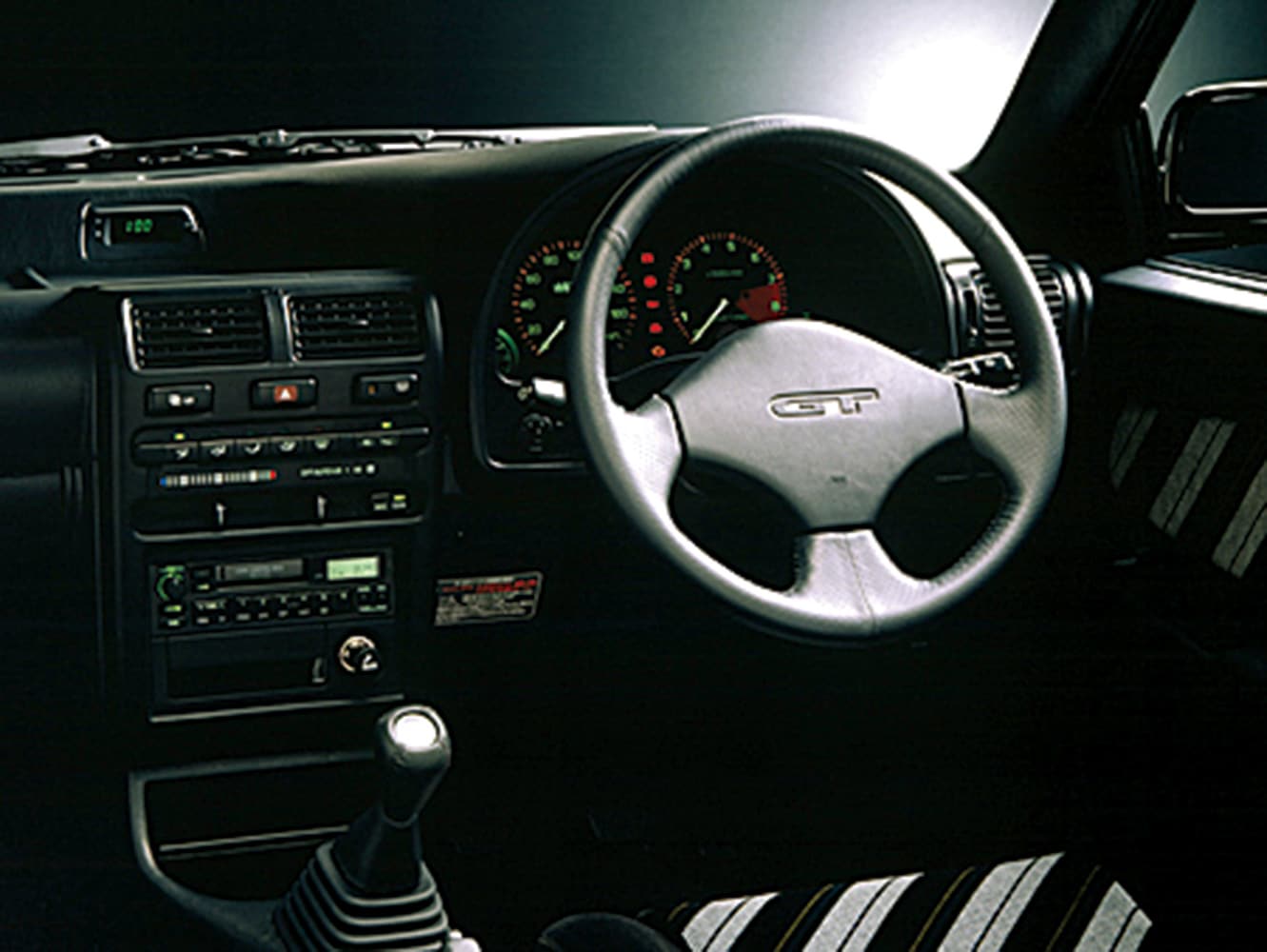
The GT Starlet is an attractive little hatchback with styling typical of the early ’90s. The pre-facelift examples are the most common, but the facelift version came with a few nicer add-ons and improvements. The most significant changes were to the lights — in 1992 the Starlet received updated rear lights, and in 1994 it received updated quad headlights. There were a few limited-edition versions, which included a rear strut bar, and a different steering wheel and gear knob. If you own the earlier ’90s version, the aforementioned facelift parts are a direct bolt-on if you can track them down.
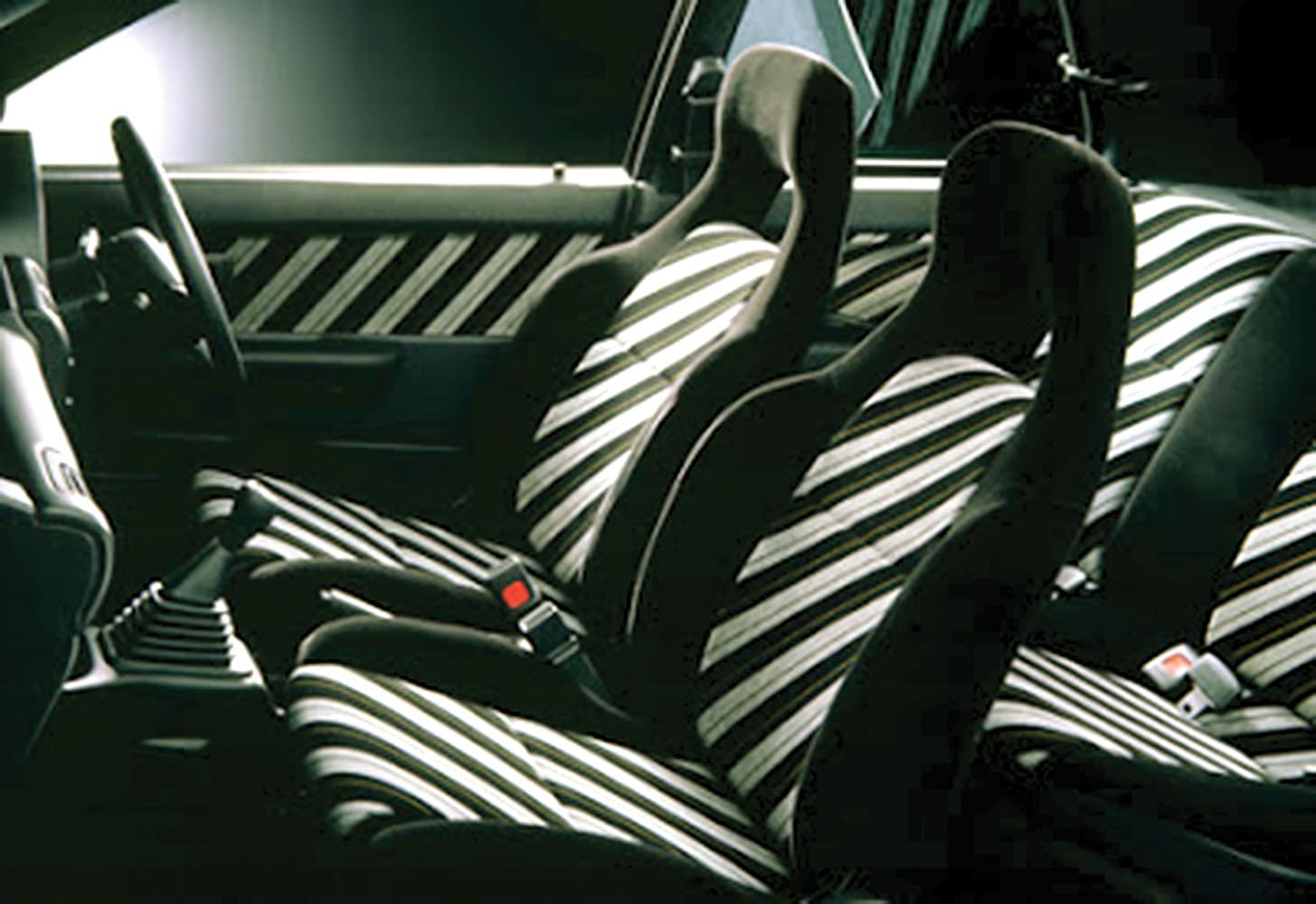
Front seats out of the Toyota Corsa EL44 bolt in too, and sit much lower than the factory GT Starlet items — improving the centre of gravity. Off-the-shelf racing-seat mounts are readily available for the EP82 chassis, and open you up to a limitless world of seat choice. Although there is a factory boost gauge of sorts, don’t go relying on it for any sort of boost increase. Make sure you install a reputable mechanical or electronic boost gauge, either or will improve and update the appearance of the interior while sharing vital information.
Driveline and suspension / handling
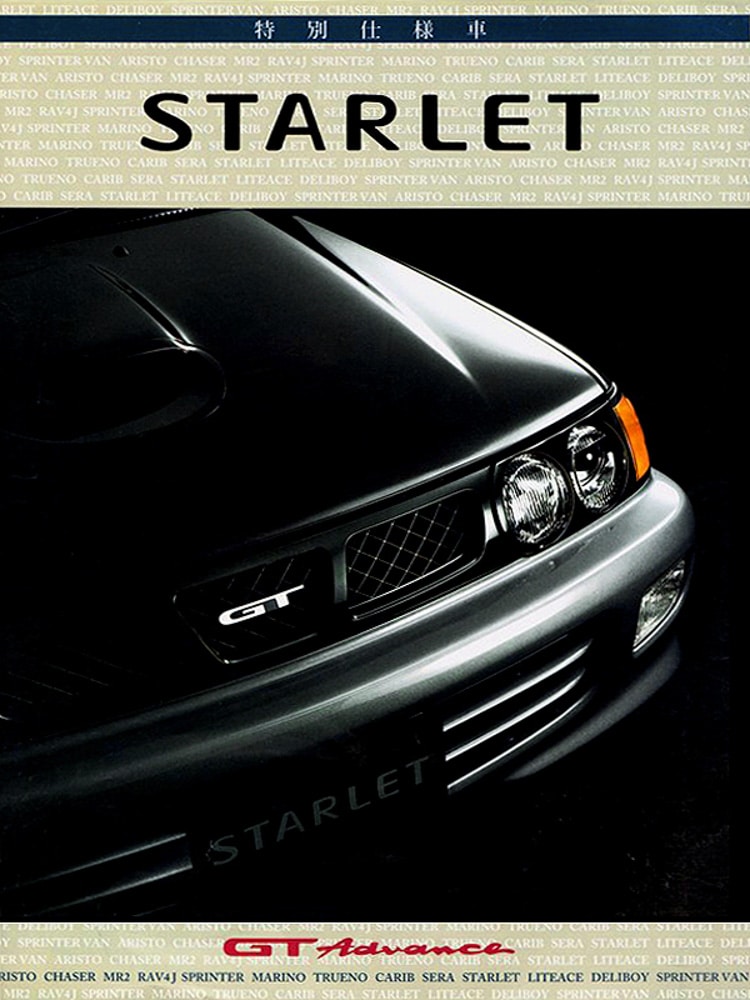
As we mentioned earlier, the Starlet is a lightweight little guy. However, as with any vehicle there is further weight to be lost, and some Starlet owners are getting theirs down to just over 800kg. We all know that losing weight is one of the cheapest modifications to improve both handling and speed, so if that’s what you’re after, start there. However, if a stripped-out daily driver doesn’t sound ideal, suspension improvements will be your only option if you want to get around bends quicker.
Companies such as Whiteline do sway bars, sway bar end links, and braces that — when accompanied with a good set of coilovers or uprated shocks and springs — will make for a huge improvement. The braking department can be upgraded with two-pot calipers from the AE101 GT-Z Levin — to get them to work you’ll need custom caliper brackets and some minor disc machining done. Don’t go thinking the factory brakes are terrible, they’re actually fairly decent, albeit rather small. For the street, uprated high-temp brake pads, fluid, and slotted rotors will be more than enough for most people.
Results
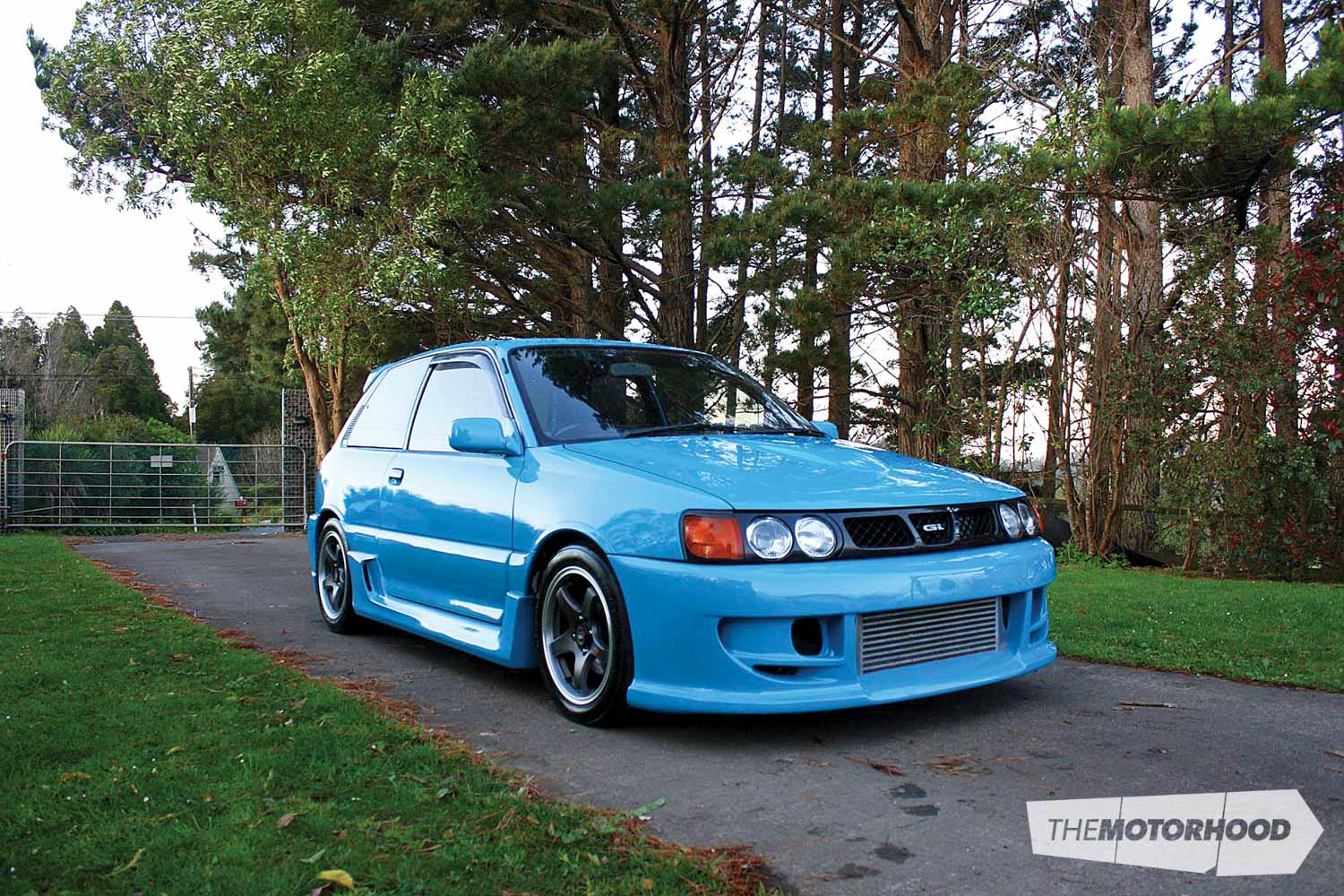
Whether you’re into drag racing, hill climbs or circuit racing, the GT Starlet has been known to be competitive. With their light weight and good power potential, you can mould your Starlet to whichever motor-sport discipline that tickles your fancy. And, being lightweight, they’ll use less fuel, brake pads, and tyres than most popular chassis. None of the above engine modifications should be completed if you have an unhealthy engine or car. Make sure to give your motor and vehicle a once-over before starting, and ensure you have a solid base to make some good power.
This article was originally published in a previous issue of NZ Performance Car. Pick up a copy of the edition here:





